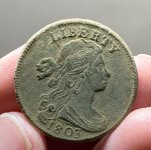Salvor6
Silver Member
- Feb 5, 2005
- 3,755
- 2,169
- Detector(s) used
- Aquapulse, J.W. Fisher Proton 3, Pulse Star II, Detector Pro Headhunter, AK-47
- Primary Interest:
- Shipwrecks
Spain signed a treaty relinquishing all claims to their shipwrecks prior to 1750. I would appreciate any links to verification of this treaty. I know there is a post about this on Tnet but I can't find it.





